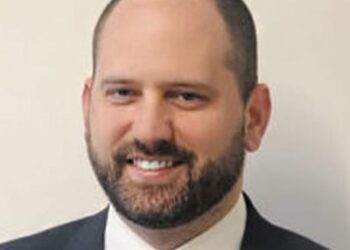Nicola passed away on 14 September 2019. Letters of administration of Nicola’s Estate were granted to his surviving wife Patricia on 4 September 2020.
The focus of this article will be the 2019/20 trust distribution resolution Stagliano Family Trust, a discretionary trust established in 1997 (the Trust Question). Hazeltone Pty Ltd was the corporate trustee of the Stagliano Family Trust and Patricia was the sole director of that company.
There was also a question to the Court as to whether Nicola’s five luxury cars were ‘personal chattels’ under section 70L of the Administration and Probate Act 1958 (Vic) (the Cars Question), which is not covered in detail in this article. The Court concluded on the evidence it had that the five cars were not used for business purposes, they were personal chattels.
But the parties decided to not incur further costs in coming to a conclusion as to the Trust Question due to the relatively lower value of the trust distribution in question compared to the value of the five luxury cars.
The Court expressed that no party to the proceedings suggested that the Estate itself could be a ‘trustee’ (i.e. and therefore could not be a recipient of the trust distribution), and the Court concluded that there was no legal basis for the Estate itself to be a beneficiary of the Trust.
The Trust Distribution Resolution
On 28 June 2020, Hazeltone Pty Ltd as trustee resolved that the income of the Stagliano Family Trust for the 2019/20 financial year was set aside for the benefit of the ‘Estate of Nicola Stagliano’ and to Patricia in equal 50/50 shares. The Resolution stated:
Distribution of Income
It was resolved that pursuant to the powers vested in the company in the Trust Deed as Trustee of the trust, that the net income of the trust for the year ended 30 June 2020 is hereby set aside for the benefit of the following beneficiaries as follows:
Beneficiary
Estate of Nicola Stagliano 50.00%
Patricia Stagliano 50.00%
It was also resolved that, for the avoidance of doubt, regardless of any adjustment to the income of the Trust, the income of the Trust shall be distributed as specified above.
The net income of the Stagliano Family Trust for the 2019/20 financial year was $155,823, and the value of the unpaid distribution to Nicola’s Estate was $77,911.50, which would be less than the value of the five luxury cars. Nicola had other unpaid entitlements from the Trust bringing the total liability to $1,483,204.38.
There was also one prior trust distribution resolution in evidence of 28 June 2019, prior to Nicola’s death, by which the income of the trust for the 2018/19 financial year was set aside for Nicola and Patricia in equal 50/50 shares. This prior trust distribution resolution was not in dispute.
The change of wording from ‘Nicola’ to ‘Estate of Nicola’ between 2018/19 and 2019/20 would appear correct (or could have been more specific), but the issue here was that the relevant general beneficiaries clause in the discretionary trust deed did not support the Estate as a beneficiary.
Clause 4(1) of the discretionary trust deed provided (bold emphasis added):
The Trustee shall stand possessed of the income of the trust fund of a financial year which is available for distribution upon trust to pay apply or set aside the same or any part or parts thereof to or for the benefit of the beneficiaries, other than a default beneficiary who is not otherwise a beneficiary, or any one or more of them exclusive of the other or others who shall be living or which shall be in existence at the time payment, application or setting aside of such income is made in such shares or proportions and from such category or categories of income as the trustee in its discretion may determine (emphasis added).
Clause 3(1) of the discretionary trust deed provided (bold emphasis retained):
The beneficiaries of the Trust shall comprise:
(a) The following persons: Nicola Stagliano ;
(b) any person who shall at any time be or have been a spouse of NICOLA STAGLIANO;
(c) any child or grandchild of NICOLA STAGLIANO born before the termination date;
[…]
(f) Secondary trust: the trustee or trustees of any trust, whether now existing or hereafter created, (‘the secondary trust’) of which a beneficiary or discretionary object thereunder is a beneficiary of the trust and where the provisions of the secondary trust require a vesting in interest of the trust property prior to the termination date and that the beneficiaries shall always be such as not to cause this deed to breach any applicable rule or law against perpetuities.
The default income distribution clause 4(3) of the discretionary trust deed would apply if income was not accumulated by resolution or distributed by valid resolution, it stated (bold emphasis added):
Default
If the trustee shall fail to effectively pay, apply or set aside the whole of the income of a financial year as provided in sub-clause 1 of this clause or to effectively resolve to accumulate the same as provided in sub-clause 2, then to the extent to which such income may not have been paid applied set aside or accumulated the trustee shall hold the same on trust absolutely for the default beneficiaries [‘takers in default’] named or described in sub-paras (i) and (ii) of para (d) of cl 13(2) and if more than one equally, and if there shall be no such persons, then for the default beneficiaries described in the succeeding sub-para of cl 13(2)(d).
And the takers in default clause 13(2) of the discretionary trust deed stated:
(d) to the extent to which the capital of the Trust shall not have been so distributed or dealt with, the trustee shall stand possessed of so much as remains of the trust fund for the following default beneficiaries as shall then be living and if more than one in equal shares as tenants in common:
(i) the spouse, parents, brothers, sisters, widows, widowers, cousins, children and remoter issue and next of kin of the said NICOLA STAGLIANO …
It was contended that if the trust distribution resolution was ineffective, the parties present at the proceedings were also the default beneficiaries and should be able to resolve how the failed distribution is to be made by further agreement. Given the relatively small amount in dispute the parties chose not to incur the cost to make further arguments on the issue.
The Court referred to a list of prior authorities, including firstly the Victorian Supreme Court of Appeal in Schreuders v Grandiflora Nominees [2016] VSCA 93, unanimously stated (i.e. ‘read the deed’):
…trust instruments are to be given their natural and ordinary meaning unless they have a special or technical meaning. The terms of an instrument must be construed in the context of the entire document and in such a way that renders them ‘all harmonious one with another’.
The parties’ intention must be found in the wording of the trust instrument rather than in what was on their minds when they executed the instrument. Evidence of the actual intention of the parties will not be admissible except in an action for rectification and other limited circumstances.
And then from Re Constantinou [2013] Qd R 219 of the Queensland Supreme Court (bold emphasis retained):
On death the entire interest in property (legal and beneficial) owned by a deceased person passes to the deceased person’s executor for the purpose of administration under the will. While the estate remains in the course of administration, no person entitled under the will has any proprietary interest in any particular asset.
While an estate remains unadministered, persons entitled under the will have a chose in action to require the deceased’s estate to be duly administered, and that right is disposable and transmissible. It carries with it the right to receive the fruits of the chose in action when they mature. It is recognised by the law that this is an inchoate interest of a kind in the assets of the estate. But that interest can be defeated by the executor using the assets to pay the liabilities of the estate. No doubt, from the time of demise the executor was subject not only to duties as executor but fiduciary duties in respect of the trusts established by the will.
However, it is not until the executor has completed the administration of the estate and assents that property passes to those entitled under the will. Those taking property at that point in time take under the will, not by reason of the assent, but the dispositions of the will become operative because of the assent.
This estate is still under administration, the executor has not assented. Thus, the executor still holds the entire legal and beneficial interest in all the property and there is no property the subject of the will trusts. There cannot be any extant trusts because, as yet, there is no property held on trust.
And finally then from Re Roth [2022] VSC 511 of the Victorian Supreme Court (bold emphasis retained):
The executors of an estate have duties to get in the deceased’s assets, pay the deceased’s debts, distribute the assets and produce accounts. Unlike trustees, executors take both the legal and equitable interest in the estate property.
An executor can become the trustee of estate property at different times so that he may act in different capacities in relation to different property at the same time. However, as explained in Jacobs’ Law of Trusts in Australia:
In practice it is not easy to determine exactly when a person ceases to act as executor and commences to hold the property as trustee. The test is clear —have the person’s executorial duties in respect of that property ended; but the difficulty in practice is to ascertain precisely whether that is the case.
The date of the 2019/20 trust income distribution resolution in question was 28 June 2020, which was 3 months before letters of administration were granted 4 September 2020.
The Court concluded, “It is clear from the authorities that a deceased estate, prior to administration and while under administration, does not constitute a trust”.
The Court held that the Estate could not fall within the secondary trust beneficiary meaning in clause 3(1)(f) of the discretionary trust deed and therefore that 50% distribution was void.
The Court also had to provide views on whether, if the distribution of 50% of the trust income for the 2019/20 financial year was void, this would mean that Patricia’s share would increase to 100% (the Court stated this should not be assumed) or that due to uncertainty the whole trust distribution resolution would be void and the discretionary trust deed’s default income distribution clause would therefore be triggered for the 2019/20 financial year trust income.
The Court stated that the question of whether the trust distribution resolution was fully void or only 50% void was not fully argued by the parties. Therefore the Court provided some preliminary views for both sides of the argument here to assist the parties to resolve the issue. But these opposing hypothetical views are not the ratio of the Judgment and of themselves would provide no useful authoritative guidance.
The tax consequences of the trust distribution were not discussed as we don’t know how the validity of the resolution as a whole was concluded between the parties.
This outcome highlights the need for trust distribution resolutions to be checked annually against the discretionary trust deed, as a simple additional limb of general beneficiaries such as a future estate beneficiary or executor or administrator of an estate may have captured the 50% distribution to the Estate which was here held to be void without such a limb.
Here, it would have been of additional value to see the Court’s conclusive view of whether the trust distribution resolution was fully void and that 100% would go to the takers in default in equal shares or whether Patricia’s 50% could become 100%. There could be a useful mechanism to include in a trust distribution resolution so that a partial void distribution doesn’t invalidate the other distributions in the resolution in case that the discretionary trust deed default income distribution happens to favour accumulation rather than the takers in default.


